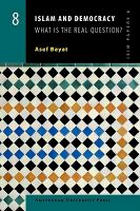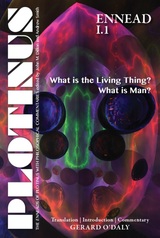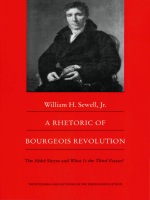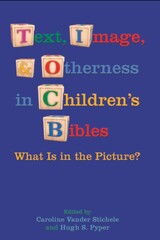5 books about What is

Islam and Democacy
What is the Real Question?
Asef Bayat
Amsterdam University Press, 2007
Is Islam compatible with democracy? The text examines one of the most frequently-asked and yet misguided questions. Democratic ethos should not and cannot be deduced from some essence of religions supposedly inscribed in the scriptures. Rather, they are the outcome of political struggles that push Islam toward democratic or authoritarian directions. Asef Bayat offers a new approach to examine Islam and democracy arguing how the social struggles of diverse Muslim populations, those with different interests and orientation, render Islam to embrace democratic ideas or authoritarian disposition. "Islamism" and "post-Islamism" are discussed as representing two contrasting movements which have taken Islam into different, authoritarian and inclusive, political directions.
[more]

PLOTINUS Ennead I.1
What is the Living Thing? What is Man?: Translation with an Introduction and Commentary
Gerard O'Daly
Parmenides Publishing, 2017
Ennead I.1 is a succinct and concentrated analysis of key themes in Plotinus' psychology and ethics. It focuses on the soul-body relation, discussing various Platonic, Aristotelian, and Stoic views before arguing that there is only a soul-trace in the body (forming with the body a “compound”), while the reasoning soul itself is impassive and flawless. The soul-trace hypothesis is used to account for human emotions, beliefs, and perceptions, and human fallibility in general. Its problematic relation to our rational powers, as well as the question of moral responsibility, are explored. Plotinus develops his original and characteristic concept of the self or “we,” which is so called because it is investigated as something common to all humans (rather than a private individual self), and because it is multiple, referring to the reasoning soul or to the “living thing” composed of soul-trace and body. Plotinus explores the relation between the “we” and consciousness, and also its relation to the higher metaphysical entities, the Good, and Intellect.
[more]

A Rhetoric of Bourgeois Revolution
The Abbe Sieyes and What is the Third Estate?
William H. Jr. Sewell
Duke University Press, 1994
What Is the Third Estate? was the most influential pamphlet of 1789. It did much to set the French Revolution on a radically democratic course. It also launched its author, the Abbé Sieyes, on a remarkable political career that spanned the entire revolutionary decade. Sieyes both opened the revolution by authoring the National Assembly’s declaration of sovereignty in June of 1789 and closed it in 1799 by engineering Napoleon Bonaparte’s coup d’état.
This book studies the powerful rhetoric of the great pamphlet and the brilliant but enigmatic thought of its author. William H. Sewell’s insightful analysis reveals the fundamental role played by the new discourse of political economy in Sieyes’s thought and uncovers the strategies by which this gifted rhetorician gained the assent of his intended readers—educated and prosperous bourgeois who felt excluded by the nobility in the hierarchical social order of the old regime. He also probes the contradictions and incoherencies of the pamphlet’s highly polished text to reveal fissures that reach to the core of Sieyes’s thought—and to the core of the revolutionary project itself.
Combining techniques of intellectual history and literary analysis with a deep understanding of French social and political history, Sewell not only fashions an illuminating portrait of a crucial political document, but outlines a fresh perspective on the history of revolutionary political culture.
This book studies the powerful rhetoric of the great pamphlet and the brilliant but enigmatic thought of its author. William H. Sewell’s insightful analysis reveals the fundamental role played by the new discourse of political economy in Sieyes’s thought and uncovers the strategies by which this gifted rhetorician gained the assent of his intended readers—educated and prosperous bourgeois who felt excluded by the nobility in the hierarchical social order of the old regime. He also probes the contradictions and incoherencies of the pamphlet’s highly polished text to reveal fissures that reach to the core of Sieyes’s thought—and to the core of the revolutionary project itself.
Combining techniques of intellectual history and literary analysis with a deep understanding of French social and political history, Sewell not only fashions an illuminating portrait of a crucial political document, but outlines a fresh perspective on the history of revolutionary political culture.
[more]

Text, Image, and Otherness in Children's Bibles
What is in the Picture.
Caroline Vander Stichele
SBL Press, 2012
Children’s Bibles are often the first encounter people have with the Bible, shaping their perceptions of its stories and characters at an early age. The material under discussion in this book not only includes traditional children’s Bibles but also more recent phenomena such as manga Bibles and animated films for children. The book highlights the complex and even tense relationship between text and image in these Bibles, which is discussed from different angles in the essays. Their shared focus is on the representation of “others”—foreigners, enemies, women, even children themselves—in predominantly Hebrew Bible stories. The contributors are Tim Beal, Ruth B. Bottigheimer, Melody Briggs, Rubén R. Dupertuis, Emma England, J. Cheryl Exum, Danna Nolan Fewell, David M. Gunn, Laurel Koepf, Archie Chi Chung Lee, Jeremy Punt, Hugh S. Pyper, Cynthia M. Rogers, Mark Roncace, Susanne Scholz, Jaqueline S. du Toit, and Caroline Vander Stichele.
[more]

What is to Be Done About Law and Order?
Crisis in the Nineties
John Lea and Jock Young
Pluto Press, 1993
The authors look at the connection between democracy and efficiency as they investigate the meaning of law and order. The authors argue that only through a democratically accountable police service can we hope to build up relationships within the inner city.
[more]
READERS
Browse our collection.
PUBLISHERS
See BiblioVault's publisher services.
STUDENT SERVICES
Files for college accessibility offices.
UChicago Accessibility Resources
home | accessibility | search | about | contact us
BiblioVault ® 2001 - 2024
The University of Chicago Press









